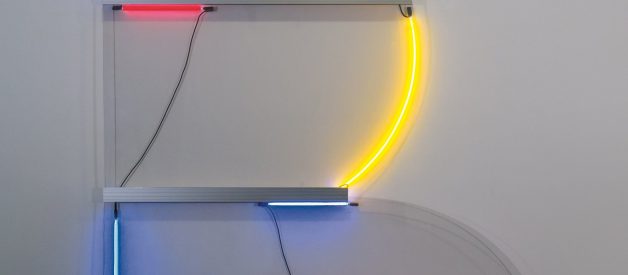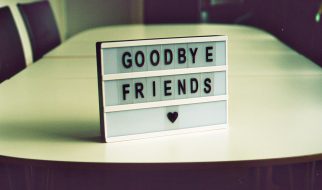Neon colors ? often called fluorescent colors ? are, at their base, extremely bright lights. Neons, like all colors, are visual representations of light. Since neon colors are especially bright, they?re best described as extremely luminescent versions of primary and secondary colors. Neon colors can only be chemically created. As a result, they?re not included in the traditional color spectrum and were not discovered until the last century.
It is important to note that while artists have been utilizing neon paint and pigments since their creation, the large majority of documented neon art uses neon lighting, making neon light the primary focus when looking at the use and history of neon colors in art.
Creation of the Neon Lamp
Around 1795, scientist Henry Cavendish had removed all oxygen and nitrogen from a container of air. After doing so, he realized there was a small portion of an unknown gas left behind. Scientists Sir William Ramsay and John William Strutt decided to figure out what the gas was. After several experiments, they concluded that the gas was argon, one of the six naturally occurring noble gases. Ramsay, however, was unsatisfied. Convinced there were other hidden gasses in the atmosphere, he teamed up with his colleague Morris W. Travers, and they began an experiment where they boiled argon to find other noble gases. Noble gases are rare ? making up less than 1% of the atmosphere ? but the pair were not deterred. Their efforts proved successful as they discovered three new noble gases: neon, krypton, and xenon.
Later, in 1896, Daniel McFarlan Moore created the first fluorescent light tubes, or ?Moore Lamps?. These large glass tubes had electrodes fixed to the ends. When the electrodes were powered up, they would iodize the mercury gas inside the tube, creating a bright white light. Inventor Georges Claude was the one to adapt Moore Lamps to use noble gases. In 1910, he successfully used neon gas to create the first neon lamp: a source of bright red-orange light that, by 1915, had taken America by storm.
While neon was the first gas used to make colored light, not all ?neon? lights are made out of neon. The name stuck, for sake of ease, but each noble gas provides a different lamp color when properly iodized. By mixing these gases and other elements, you can create limitless arrays of neon color. Neon lamps in varying colors were created after Claude?s experiments, and create the neon signs we?re used to today.
Neon Colors Created by the Different Noble Gases
Descriptions for the colors produced from each noble gas varies. Various combinations of these gases and other elements can produce a limitless amount of colors, despite the most common base shades listed.
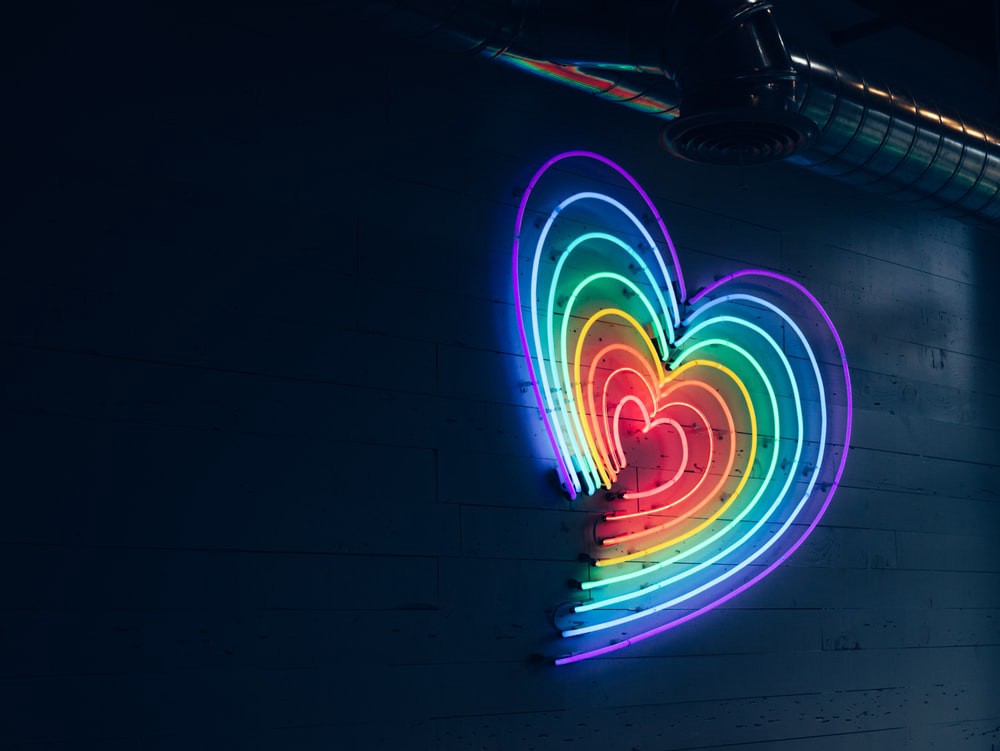 Unsplash
Unsplash
Neon ? red-orange light
Argon ? violet to pale blue light
Helium ? orange to white light, pink-red
Krypton ? off-white, green, or yellow
Xenon ? gray, blue, off-white, or green
Radon, the final naturally occurring noble gas, is said to give off yellow light, but it is not used in everyday neon lights because it?s highly radioactive.
Luminescent Pigments
The first luminescent paint was created by Bob Switzer and his brother Joseph. After a severe accident left Bob on bed rest in a dark room for several months, the pair began using blacklights to find and experiment with fluorescent compounds from their father?s pharmaceutical job. After Bob?s recovery, they continued their experiments, eventually mixing the fluorescent compounds with wood varnish, creating the first black light fluorescent ? or neon ? paints.
?Because fluorescent colors are bright, brash, and artificial, they haven?t always been associated with good taste. While muted tones tend to have a more chic and intellectual reputation, neon hues are affiliated with fun, frivolity, and excess. Links with fluorescent signage further cement neon?s connection with nightlife, clubbing, and cities after dark, particularly when combined with dark colors like black or midnight blue.
Neon colors can also be associated with warning and danger, due to their use in high-visibility clothing and signage.? ? Shutterstock
The Difference Between Neon and Fluorescent
While the terms are often used interchangeably, there?s a distinct difference between neon and fluorescent light. Fluorescent lights are created similarly to neon lights, but are different in that the gas used is not a noble gas ? instead it?s mercury vapor. Another major difference is that as the vapor emits light it also emits ultraviolet rays, so all fluorescent lights are internally coated in phosphor to protect humans from the UV radiation.
While neon lights can take on an endless array of colors, fluorescent lights have a limited range of whites with various undertones. Both of these lights are different than blacklights, which emit high levels of long UV rays and very little visible light (causing them to take on a dark appearance). All three types ? neon, fluorescent, and blacklight ? have fluorescence (when light emits from something that has absorbed light). At the same time, all three forms of light fall under the umbrella of luminescence, along with a number of other luminescent lights.
Despite neon and fluorescent lights being different, the terms neon and fluorescent color are often interchangeable. Fluorescent color refers to any color that emits more light than any conventional color. However, neon has become the common term to refer to any such color that seems to glow.
A History of Neon Lighting in Art
?Andy Warhol, who entered the world of art in the late 1940s, described neon as ?one of the great modern things?. French artist Martial Raysse became one of the first artists to work with neon in an artistic sense, blending pop art portraiture with neon accents. This was one of the first instances of bringing neon into the cultural zeitgeist of the times.? ? Neon Creations
Neon lighting first appeared in Paris in 1910. From then on, it soared, lighting up cities across the world even during the wars.
Neon art began to rise in the 30s and 40s. As a symbol of the modern age, neon signs had become increasingly popular in busy cities. In the 60s and 70s, neon signs installed in the 40s began flickering out, causing them to be associated with the seedier parts of cities or locations like Times Square, which were advertisement hubs. Neon began to be seen as a dying economic prospect and lost it?s initial artistic, charming, and fascinating glow.
Neon Art of the 60s
Keith Sonnier entered the realm of neon art in 1968. His early, minimalist work brought together neon and other sculptural mediums, including incandescent and black lights. Some of his most recognized pieces are public commissions, such as his permanent installation at the New International Airport in Munich.
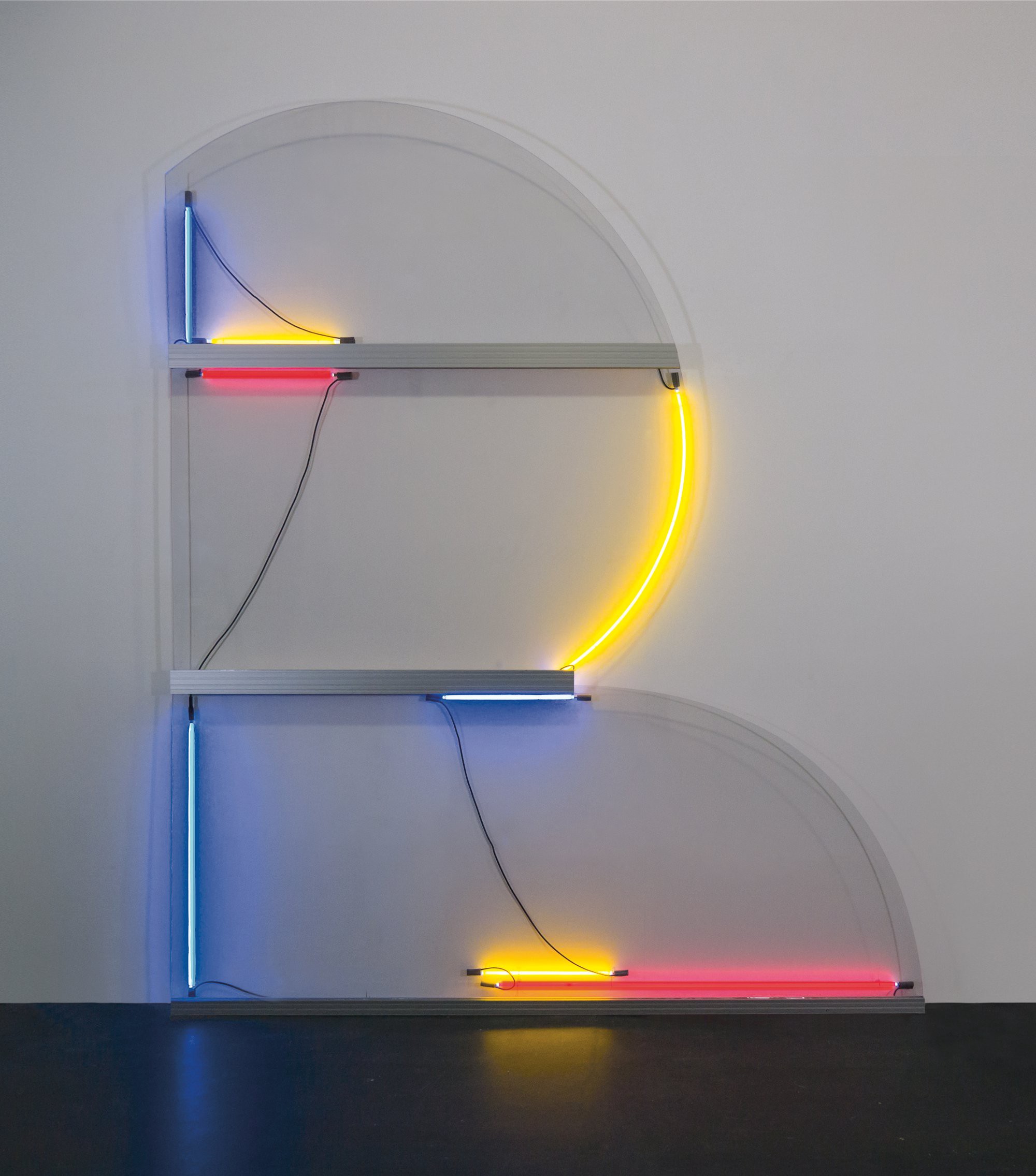
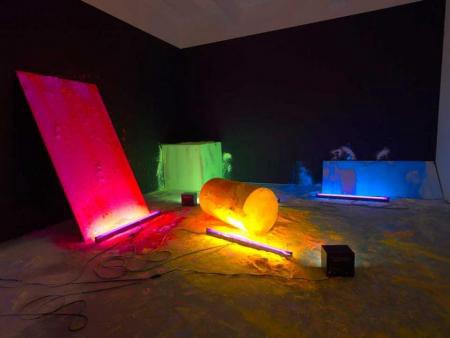
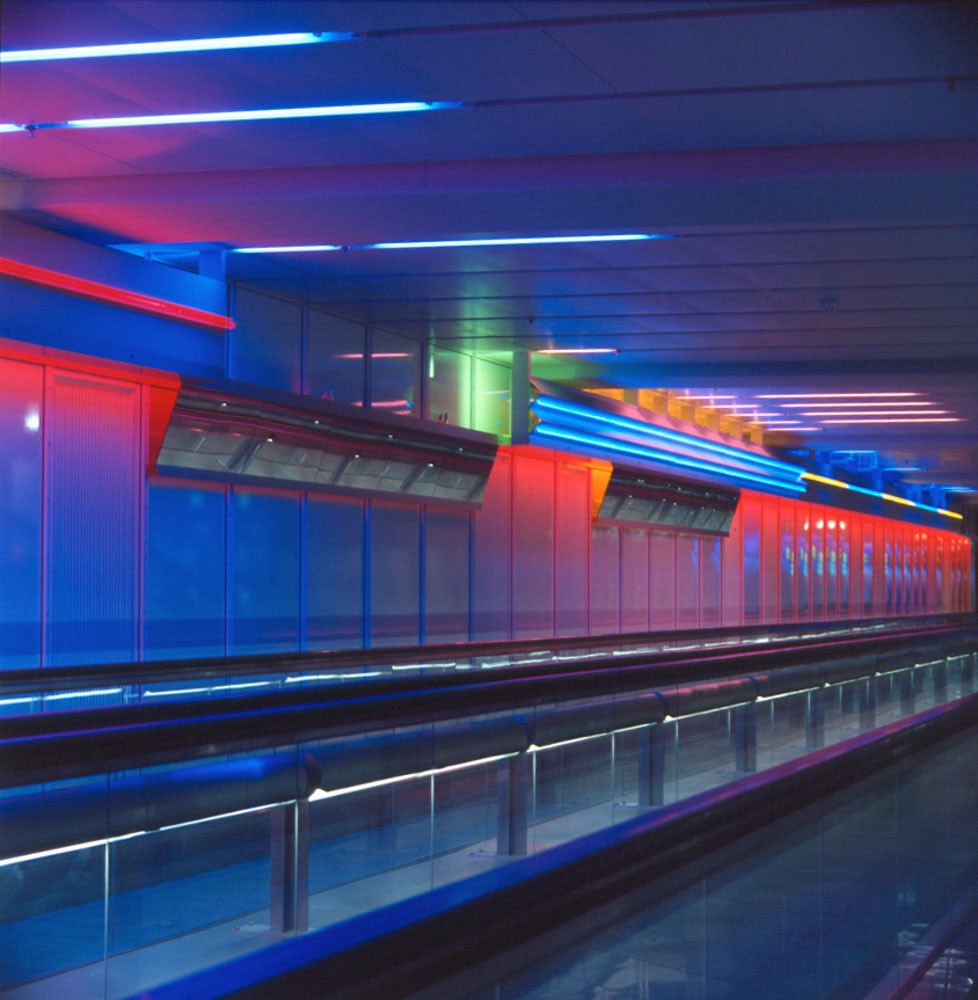 (left to right) Lunar Slice (2013). Dis-Play series (1970). Lichtweg installation (1992).
(left to right) Lunar Slice (2013). Dis-Play series (1970). Lichtweg installation (1992).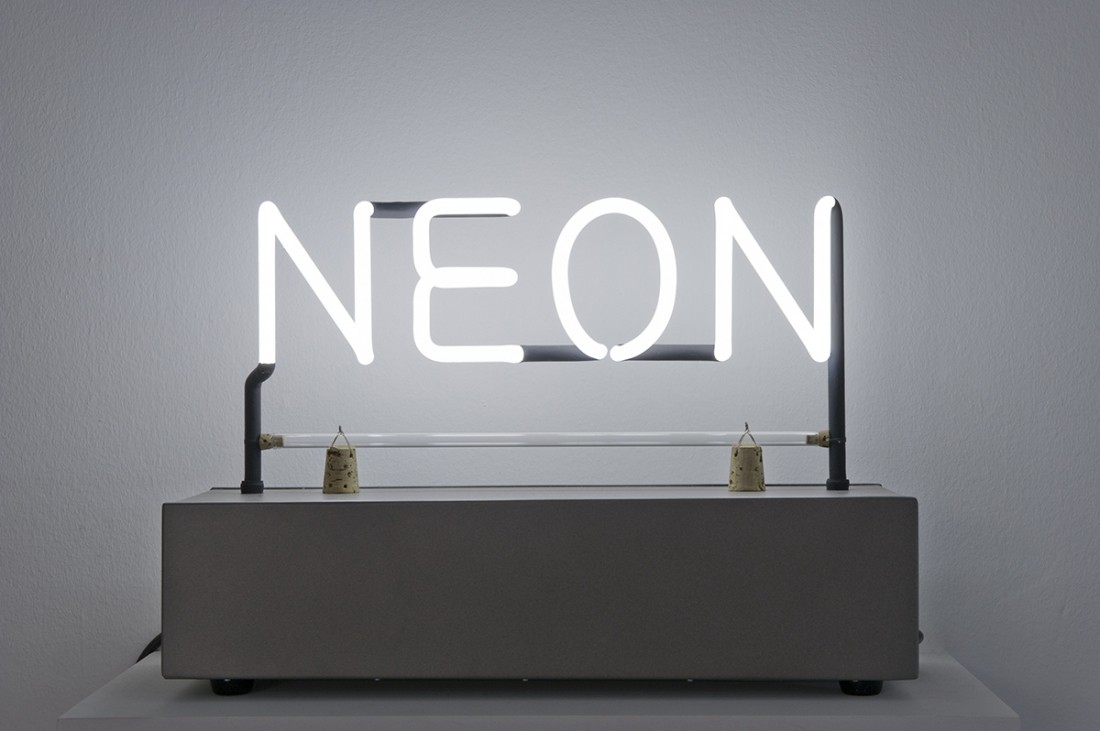 Neon (1965)
Neon (1965)
Joseph Kosuth created language-based neon artwork starting in the 60s. One of his most famous pieces, a white neon sign that spells the word ?Neon? (as the piece is named) became a conceptual icon as it used structuralist thought to emphasize the distance and relation within words. Through his work and the works of other artists, neon art moved to be more than a commercial medium: it became an emblem of urban life and commercialism in the modern age.
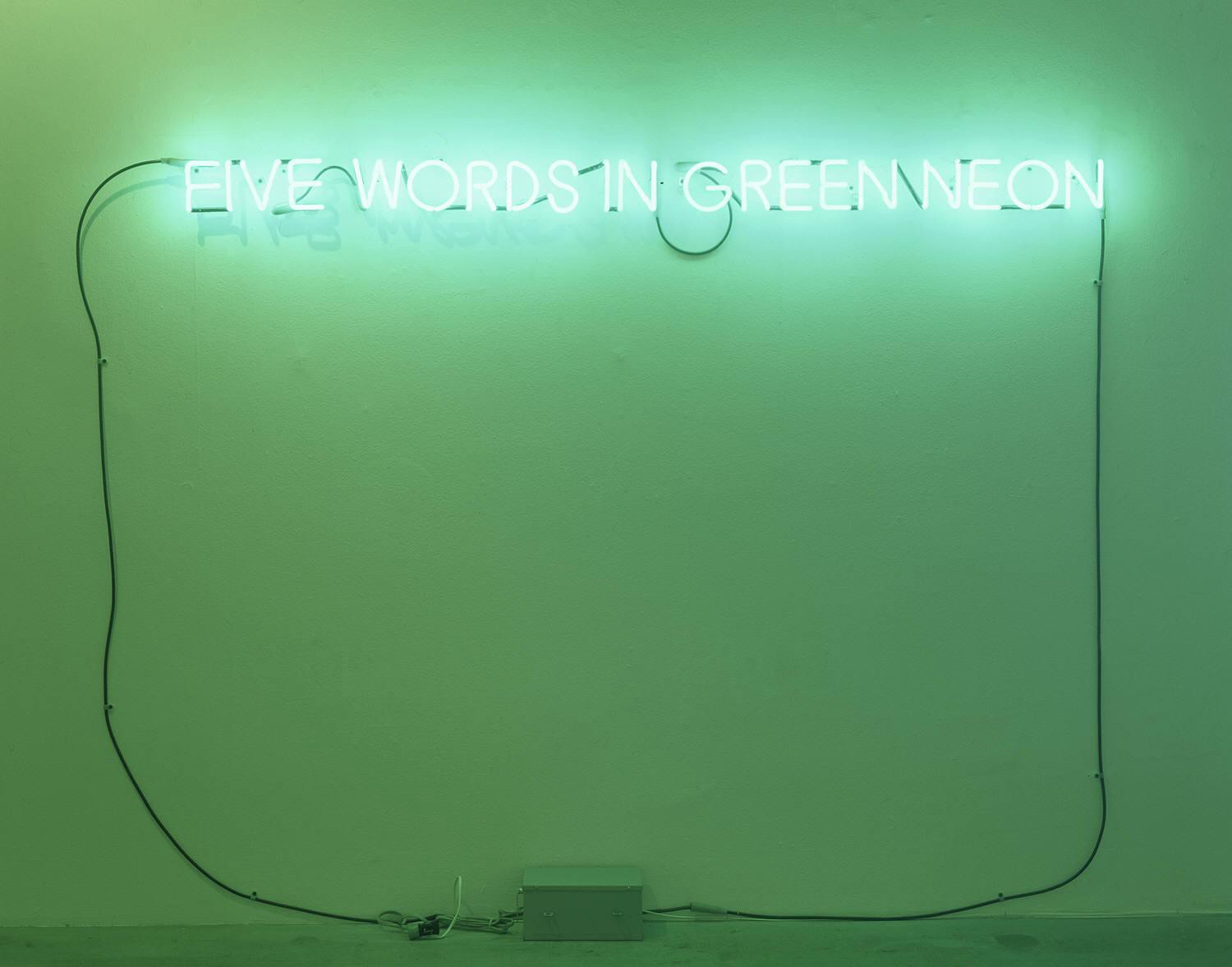
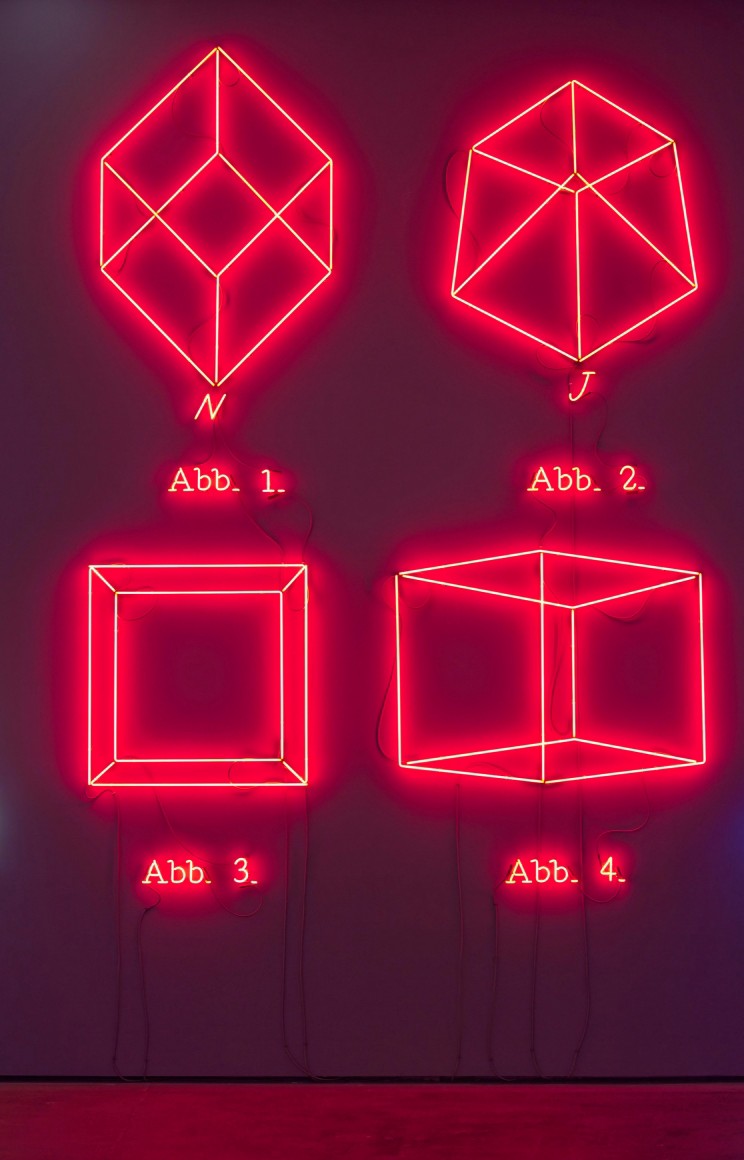 (left to right) Five Words In Green Neon (1965). 1, 2, 3, 4 (1993)
(left to right) Five Words In Green Neon (1965). 1, 2, 3, 4 (1993)
Bruce Nauman is known for his work in establishing the ?words-in-neon proposition?. His 1967 installation The True Artist Helps the World by Revealing Mystic Truths is credited with establishing the artistic take on neon signage.
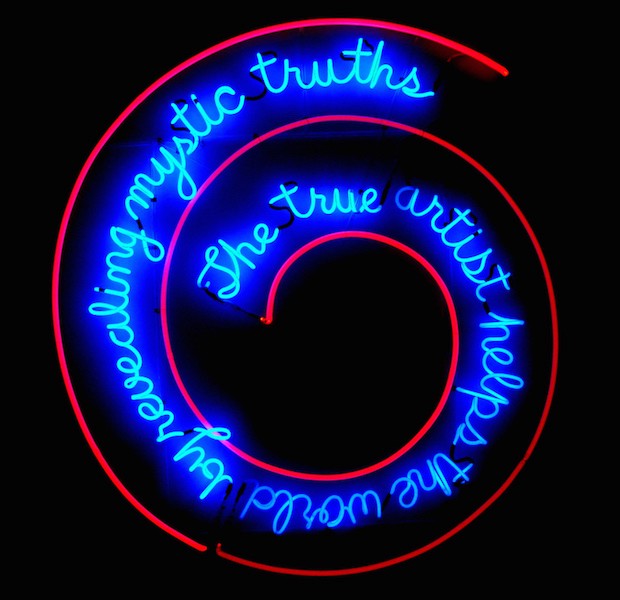 The True Artist Helps The World By Revealing Mystic Truths (1967)
The True Artist Helps The World By Revealing Mystic Truths (1967)
Other notable neon-inclusive artists from this time are Dan Flavin and Joan Balzar.
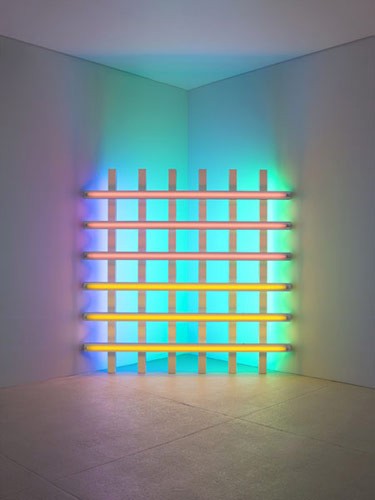
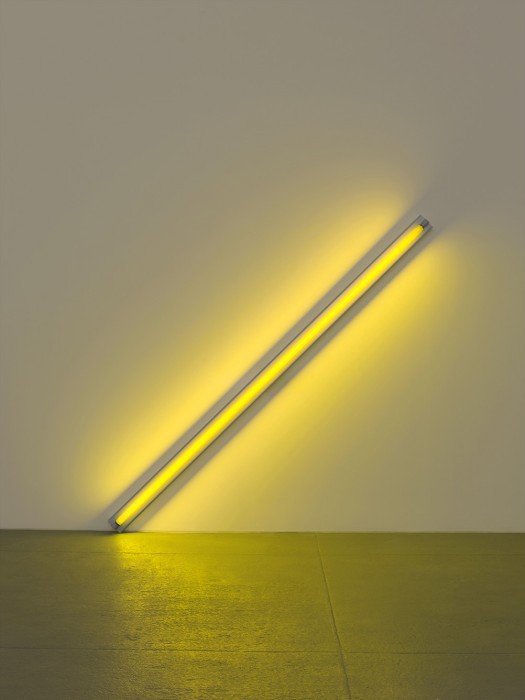
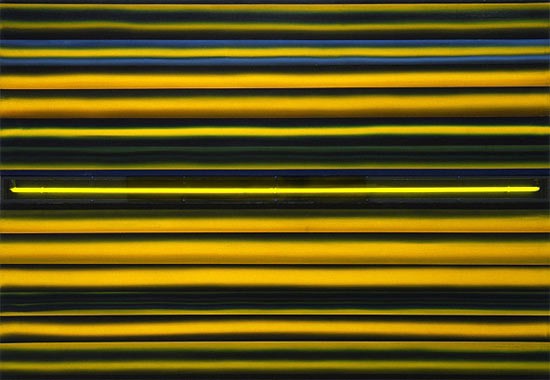 (left to right) untitled (in honor of Harold Joachim) 3 (1977, Flavin), The Diagonal of May 25th, 1963 (1963, Flavin), Fusion (1967, Balzar)
(left to right) untitled (in honor of Harold Joachim) 3 (1977, Flavin), The Diagonal of May 25th, 1963 (1963, Flavin), Fusion (1967, Balzar)
Neon Art of the 80s and Onward
In the 80s, a group of British artists called the Young British Artists sought to make neon a popular, culturally significant medium again.
One of these artists was Tracey Emin. Her work, often neon signs modeled off of her own handwriting, exemplifies the power a message in neon can bring. She is celebrated for using universal contemporary experiences in her work.
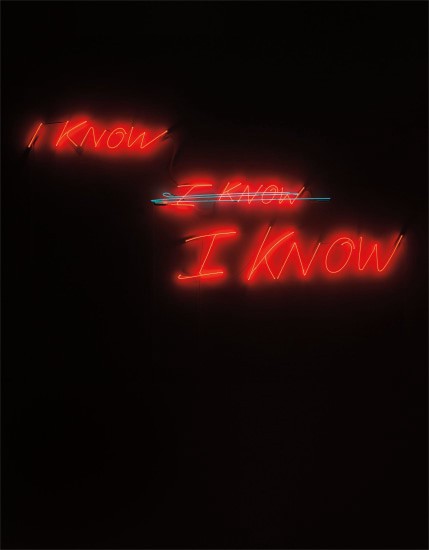 I Know I Know I Know (2002)
I Know I Know I Know (2002)
Her 2002 piece, ?I know I know I know?, features that phrase repeated three separate times in a fiery red light. The middle ?I know?, is crossed out in electric blue. This is not only a feat of craftsmanship: each tube delicately created, positioned, and attached to the same wiring, but it is also a strong social statement; one that?s often referred to as ?teen-like angst?. Her piece ?Love is what you want?, is part of a collection of neon love confessions in Emin?s handwriting that address the disconnect between language and motive.
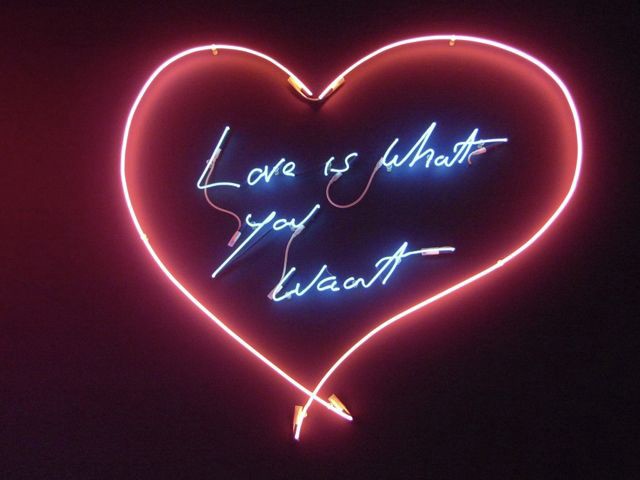
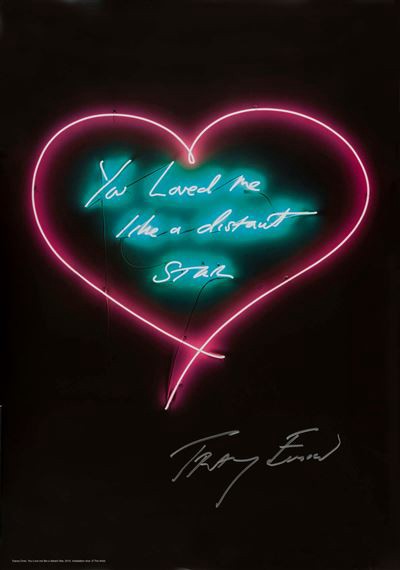 (left to right) Love Is What You Want (2015), You Loved Me Like A Distant Star (2016)
(left to right) Love Is What You Want (2015), You Loved Me Like A Distant Star (2016)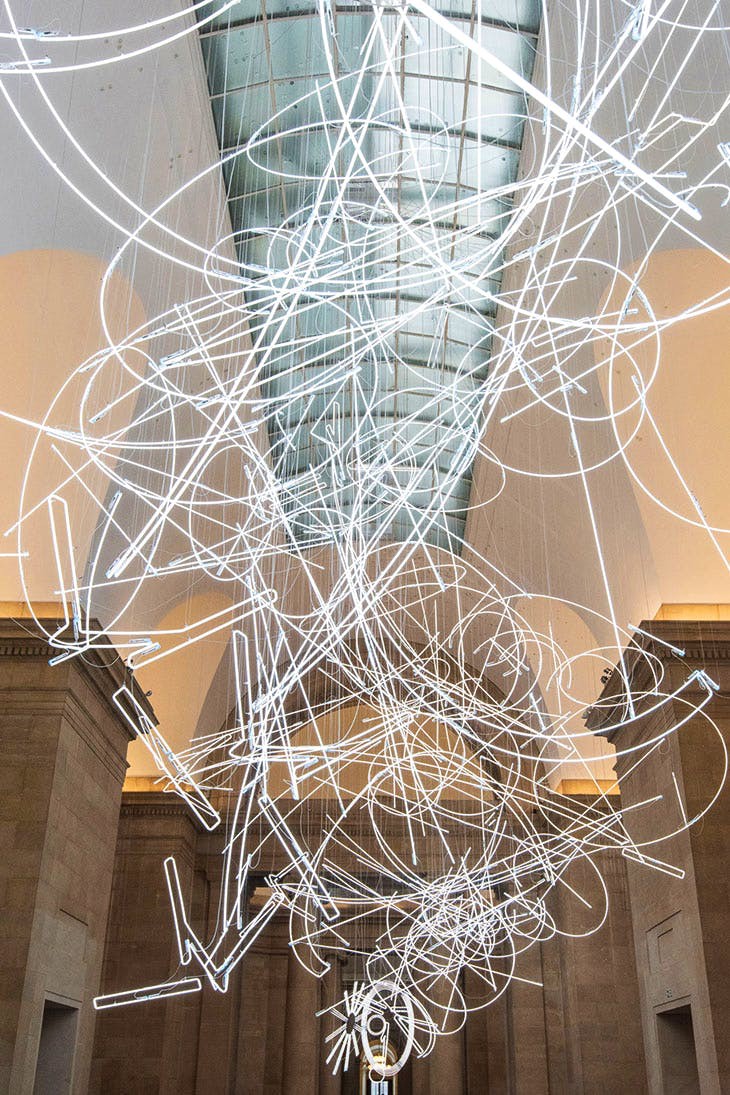 Forms in Space?by Light (in Time) (2017, Evans)
Forms in Space?by Light (in Time) (2017, Evans)
Another one of the YBA artists, Cerith Wyn Evans, asked questions on how we communicate and on the effectiveness of our language as he focused on works relating to their manifestation in space. He merged his careers in cinema and art through his neon-studded pieces.
Fiona Banner used minimalism to draw meaning from her neon artwork of the late 90s. One of her earlier pieces, a single illuminated period dot, sits at just a centimeter long and is thought by some to be the ?smallest neon in the world?.
Glenn Ligon has been hypnotizing the art world with his powerful neon statements since 2006. His work ?Rckenfigur? features the word ?AMERICA?.
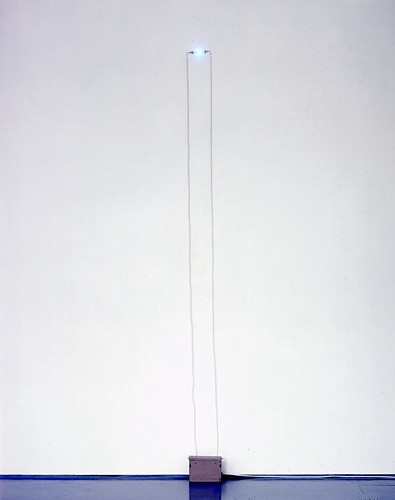 Full Stop (1997, Banner)
Full Stop (1997, Banner)
All the typewriter scripted letters in ?AMERICA? seem to be free-floating and are loosely connected to create one glowing message. This piece is often seen as a strong social statement, and was included in the recent 30 Americans exhibition, which has traveled the U.S. for a decade to showcase African American artwork about the ?complex dialogues surrounding race, history, identity, and beauty.?
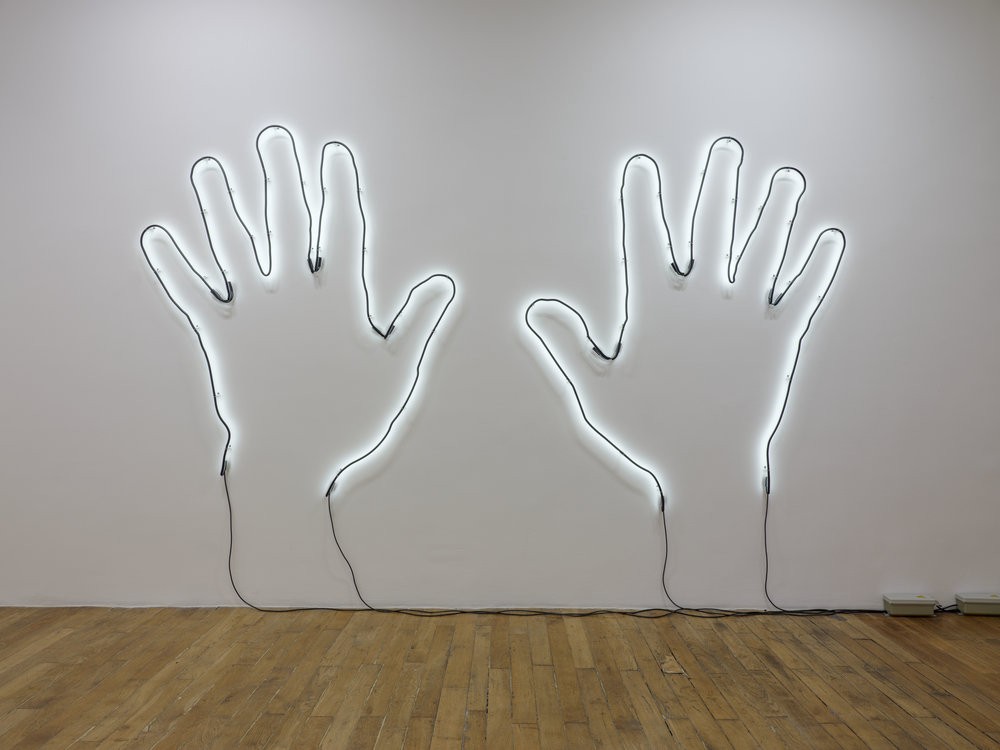

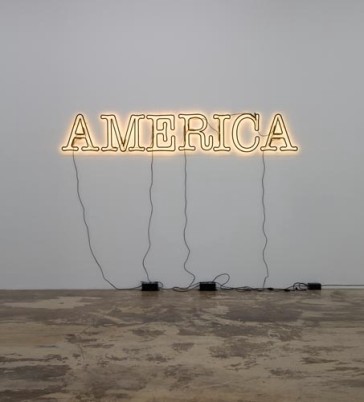 (left to right) Notes for a Poem on the Third World (chapter one, Ligon) (2018), A Small Band (2018, Ligon), Rckenfigur (2009, Ligon)
(left to right) Notes for a Poem on the Third World (chapter one, Ligon) (2018), A Small Band (2018, Ligon), Rckenfigur (2009, Ligon)
Ivn Navarro, an artist from Chile, has created electric politically-charged art pieces for the past few decades. His work, originally focusing on critiquing a Chilean dictatorship, has also come to critique the United States as of 2009. His collection of neon sculptural pieces is highly regarded and creates a powerful statement: ?Neon is fragile,? Navarro once stated in relation to his piece Red and Blue Electric Chair, ?but it can electrocute you.?
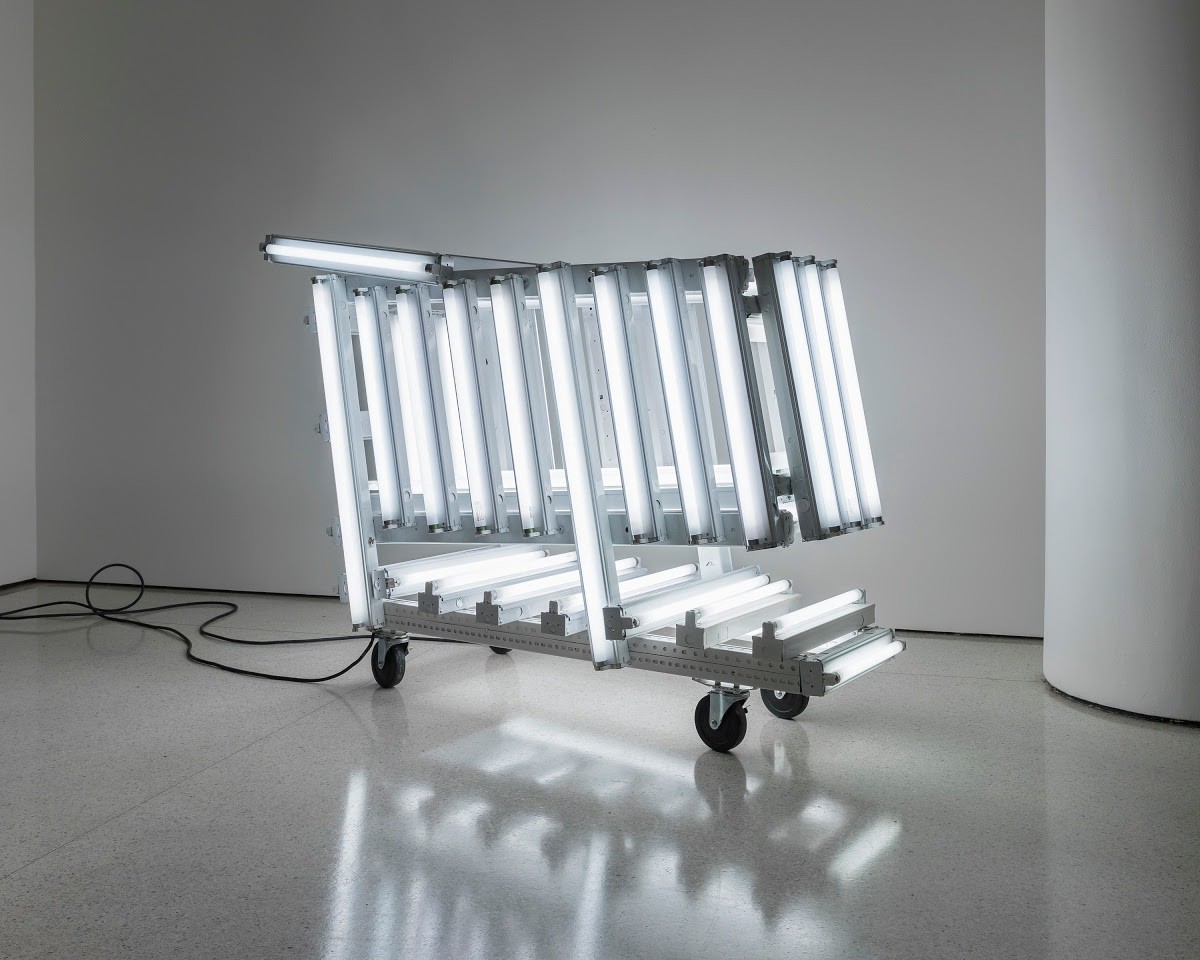
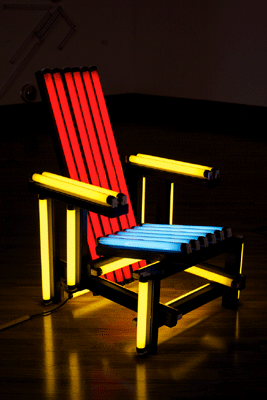 Homeless Lamp, the Juice Sucker (2004?5), Red and Blue Electric Chair
Homeless Lamp, the Juice Sucker (2004?5), Red and Blue Electric Chair
Jung Lee, a South Korean artist and photographer, brings neon to the wilderness. Her works, installed to be seen from a distance, are found across reflective lakes or snowbank through South Korea. Her pieces feature a mixture of legible words and phrases as well as abstract neon lines. These pieces are installed and photographed before being taken down.
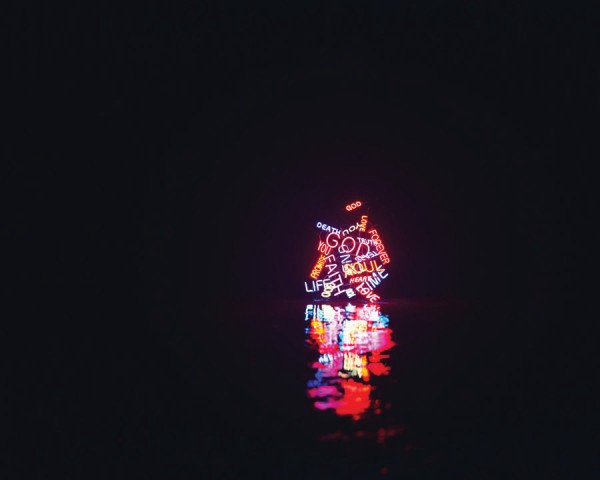
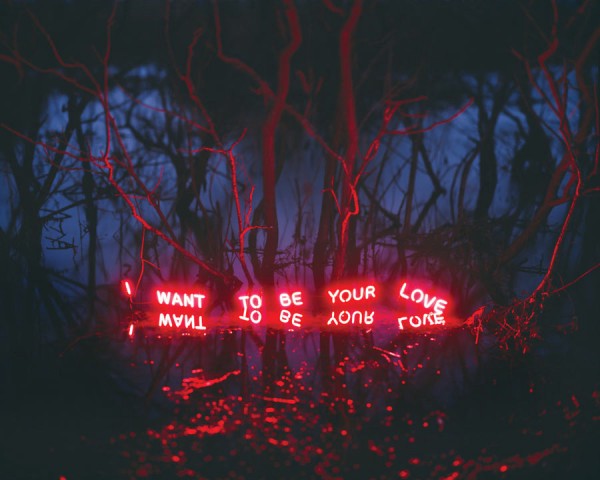
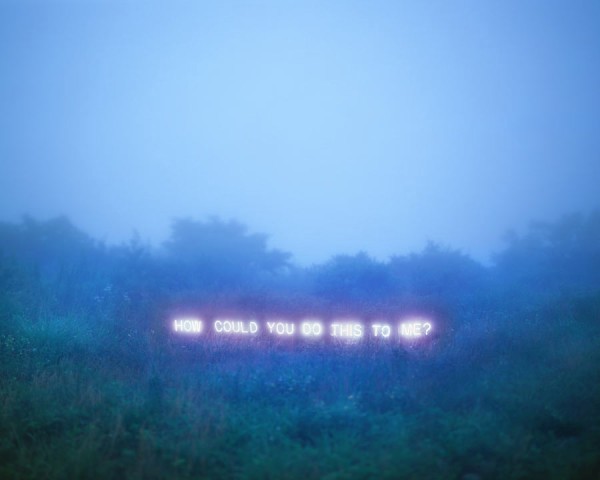 (left to right) Day and Night #2 (2012), I Want To Be Your Love (2012), How Could You Do This To Me? (2011)
(left to right) Day and Night #2 (2012), I Want To Be Your Love (2012), How Could You Do This To Me? (2011)
For a collection of more neon-based artworks, check out the digital documentations of the 2016?17 Grundy Art Gallery exhibit Neon: The Charged Line. Flickering Light: A History of Neon is a great resource that explains the history of neon and its ties to consumerism, art, music, and literature.
